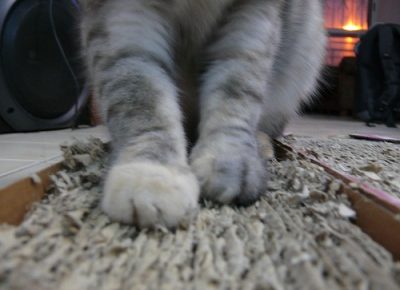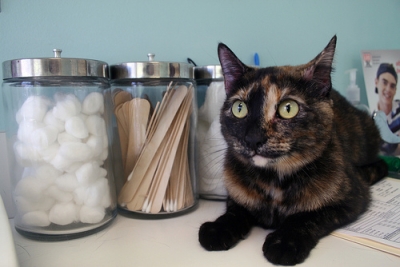
A cat’s whiskers are not just pretty adornments. The serve useful functions that cats cannot do without.
Cats have whiskers on several areas of their bodies. They are located on the sides of the nose, approximately 12 on each side in 4 horizontal rows. There are shorter whiskers above the eyebrows, on the chin and the backs of their front legs. Whiskers are also called tactile hairs or vibrissae.
The cheek whiskers are the ones we’re most interested in. They are long, 2-3 times thicker than the cat’s fur. All the whiskers are flexible. They have deep roots close to nerves and blood vessels.
The purpose of the whiskers which are approximately as long as the body is wide, is to allow a cat to measure an opening to see if s/he can fit through. They act as a kind of radar for the cat. The whiskers are very sensitive and can feel the slightest air currents, allowing the cat to feel its way even in the dark and avoid stumbling or bumping into objects.
You can often tell a cat’s mood by its whiskers. An angry cat will pull its whiskers back, while a contented one’s whiskers will be in the normal position.
Cats do shed their whiskers and new ones replace those lost. Because they are vital to a cat’s navigation, whiskers should never be cut. Your cat can become disoriented and confused with the loss of whiskers.
Blind cats rely on their whiskers as well as their sharp senses of hearing and smell to help them get about.



